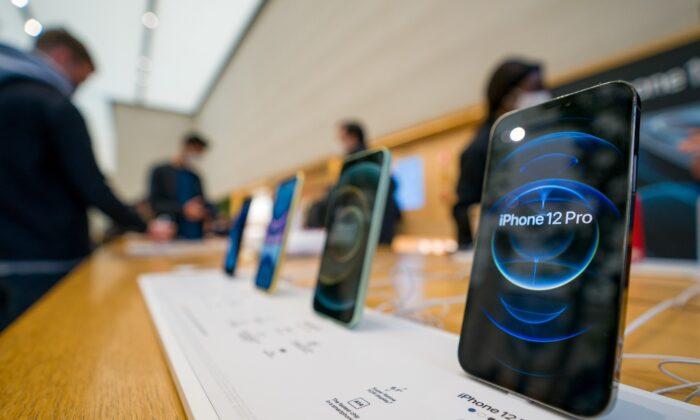Apple’s first iPhone had an eye-popping price of $499 when it was introduced 14 years ago. That’s about $640 adjusted for inflation today.
The current iPhone 12 starts just a little higher—at $700—but is a distant technological relative to that first 4GB, 4.5-inch-tall iPhone in 2007. The 12th iteration is more than an inch taller with 16 times the memory. For 10 percent more money, iPhone customers are getting a lot more bang for their buck.
The iPhone 12 is the most recent base model until Tuesday when Apple is expected to announce a slate of new products, including its next generation of iPhones. Apple hasn’t said how much the new version will cost—that’s always part of building excitement for the company’s product launches.
Shareholders are expecting another big profit center. Apple shares have far outperformed the S&P 500 over the past three months by rising more than 20 percent. Investors expect any new slate of phones to be as successful as the 12 has been for Apple’s bottom line. The company reported record revenues and profit in its fiscal first quarter thanks to the device.
The 13th version may come with a higher price thanks to higher component prices. TSCM is the largest supplier of semiconductors for iPhones, and it reportedly is raising its prices by as much as 20 percent. Still, Apple watchers do not expect the newest base version to represent an enormous technological leap like other launches. That may keep any price hikes down as Apple already has warned supplies for the new devices will be tight.
Regardless of whether the newest iPhone jumps in price or remains close to its most recent relative, it will represent a quality adjustment if the expected improved display, faster processing, and better camera are included. It may be tough for customers to put a value on those improved features even if Apple does bump up the price tag.
Former Federal Reserve Chairman Alan Greenspan pointed that out when Nokia made the best-selling cell phone. “When the characteristics of products and services are changing rapidly … adjusting an item’s price for improvements in quality can be exceptionally difficult,” he said in 1998.
Capturing a product’s improvements is a lot more difficult than looking at a higher price and reflexively seeing evidence of inflation.
Financial journalist Tom Hudson hosts “The Sunshine Economy” on WLRN-FM in Miami, where he is the vice president of news. He is the former co-anchor and managing editor of “Nightly Business Report” on public television. Follow him on Twitter @HudsonsView.
©2021 Miami Herald. Visit at miamiherald.com. Distributed by Tribune Content Agency, LLC.





